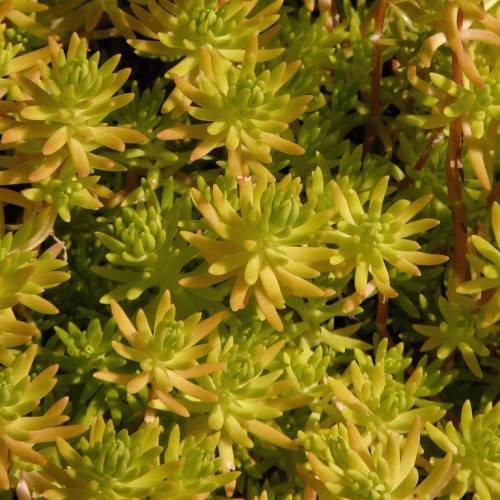
stonecrop
Sedum LEMON CORAL
Cycle:
Herbaceous Perennial
Watering:
Minimum
Hardiness Zone:
7 - 11
Flowers:
Flowers
Sun:
Full sun
Leaf:
Yes
Growth Rate:
Low
Maintenance:
Low
Drought Tolerant:
Yes
Salt Tolerant:
Yes
Care Level:
Low
watering
Watering stonecrop (Sedum LEMON CORAL) plants is essential to their health and longevity and should be done regularly. During the spring and summer, the plants should be watered deeply on a weekly basis. It is best to water the plants in the morning so that the foliage has time to dry out before nightfall. In autumn, the amount of water should be reduced and the watering should become less frequent, being done every 2 to 3 weeks. In winter, it is only necessary to water the plant occasionally, allowing the soil to dry out completely between waterings. It can also be beneficial to mist the leaves of your plant occasionally, as this will provide it with additional humidity and help keep it healthy.
sunlight
Stonecrop (Sedum Lemon Coral) grows best in full sun, meaning it should be exposed to at least 6-8 hours of sunlight each day. It needs the direct sunlight to help the plant carry out photosynthesis in order to grow and thrive. It does very well in hot, sunny conditions, and it is a good plant choice for south-facing locations in warm climates. In colder climates, stonecrop can benefit from protection from the most intense midday sun. Avoid planting stonecrop in shady areas as this could lead to stunted growth and weakened stems.
pruning
For the variety of Sedum Lemon Coral, pruning should be done about once a year during the late spring or early summer. It is best to prune about 1-third of the foliage and remove any dead or dying stems. When pruning, it is important to keep in mind that stonecrop prefers to stay on the shorter side. Avoid cutting off too much foliage or the plant may not look as full and bushy. Additionally, prune any branches or stems that look weak or overly thin. This pruning technique will encourage healthy and strong growth in the future.
